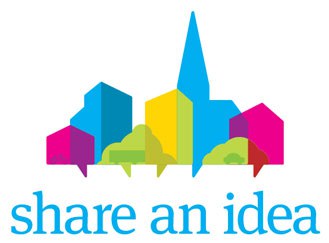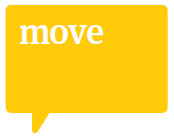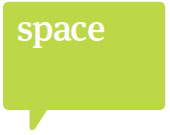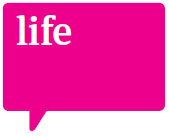You're the Voice
 The February 2011 earthquake in Christchurch killed 185 people and injured many more. Destruction was widespread, and the central part of the city was severely damaged. Home to about 375,000 people before the earthquake, Christchurch is one of New Zealand’s oldest cities. Many of the city’s historic buildings and landmarks have been, or will be, demolished.
The February 2011 earthquake in Christchurch killed 185 people and injured many more. Destruction was widespread, and the central part of the city was severely damaged. Home to about 375,000 people before the earthquake, Christchurch is one of New Zealand’s oldest cities. Many of the city’s historic buildings and landmarks have been, or will be, demolished.
Christchurch City Council (the Council) is responsible for the redevelopment of the central city. It wanted to hear local views and let residents have a say in what any new city centre should look like. But the Canterbury Earthquake Recovery Act 2011 gave the Council only nine months to produce a recovery plan for the central city area, an extremely tight timescale.
The major issue for the Council was how to get Christchurch people to express their views while the city was still suffering and in a relatively short period of time. It was important that the consultation was meaningful and sincere at a time of crisis and turbulence.
What did the Council do?
The Council decided that a large-scale public participation campaign was the best way, and came up with the "Share an Idea" project.
What was this?
Share an Idea was designed as a city-wide conversation using social media as a key way to communicate with Christchurch people. The Council wanted people to tell them, and one another, how they wanted the new city centre to be. The Council also wanted to give people something positive to focus on during a very difficult time.
It was important that the consultation was meaningful and sincere at a time of crisis and turbulence.
People needed to be engaged, to feel that they had a stake in the city’s future, and to believe that their views would be heard and actively considered. The Council’s goal was to generate as many ideas as possible for the city centre.
What were the barriers to using social media to start a conversation with Christchurch residents?
The Council’s previous consultation efforts had used a more traditional method of formal submissions from individuals and organisations.
Submission numbers were usually relatively low. For example, the long-term council community plan had 1400 submissions - that’s around one submission for every 268 people.
The Council thought that people previously saw consultation as bureaucratic, not inviting enough, and occurring too late in the planning process to stimulate a good response.
To achieve better engagement, the Council faced some difficult hurdles. These included:
- people were traumatised – 10 weeks after the earthquake, people were distressed and living highly disrupted lives, and the issue of planning for the city's future might not have been among their personal priorities;
- the issues to be consulted on were complex – the Council had seven planning workstreams and these could not be easily communicated to the public;
- timeframes were tight – under normal circumstances, consultation of this kind would be measured in years, but the time from conception to launch was only five weeks;
- Christchurch had a cluttered and confusing communications environment – many organisations were involved in earthquake recovery, with many logos and many messages; and
- cynicism and negativity abounded – local government is often criticised for its lack of consultation on issues, so there was a risk that the short time frame could make the exercise look insincere.
People needed to be engaged, to feel that they had a stake in the city’s future, and to believe that their views would be heard and actively considered.
What did the Council do to overcome these barriers?
Leadership was seen as vital to successfully getting people’s views. The Council’s leadership team provided a clear steer about the importance, direction, and priority of the Share an Idea project.
Working closely with private sector communications experts increased the Council’s capability. The Council also simplified things as much as possible to make it easy for people to participate. Consolidating the previous seven planning workstreams into four colour-coded themes, Move, Market, Space, and Life, made them easier to understand.




Using external communications companies, the Council developed a crowd-sourcing tool - the Share an Idea website. The site asked, “What’s your vision for redeveloping central Christchurch?” Answers could be up to 140 characters in length, similar to Twitter. This kept submissions focused.
Idea submissions were matched to the four themes, making it easier for the Council to analyse them. The website was launched to Council staff before going public, which allowed the site to be tested and gave it some life and content before the site went “live”.
How did it work?
Communicating with people was fairly instant – almost like a conversation. Ideas posted on the website were acknowledged by return email. They were then quickly moderated and uploaded to the site, usually within minutes.
The Council simplified things as much as possible to make it easy for people to participate.
The Council thinks that public engagement increased as a result of people being able to see their contribution in near real time.
During the course of the campaign, the website evolved as a result of the feedback and comments received. It changed from asking for general ideas to asking specific questions on emerging themes. The Council also changed questions regularly to keep the content fresh and the conversation going, so the campaign became self-sustaining.
Ideas posted to the website were used as content for print advertising. Towards the end of the campaign, advertising featured emerging themes. This provided feedback to those who had taken part, and gave people a general idea about where the planning was headed.
To support the campaign, consistent logos were used on all forms of marketing. To support the website, a newspaper-style tabloid was delivered to 160,000 households throughout the city. This outlined what Share an Idea was about and how people could get involved.
A community expo was also held, where visitors could talk to Council staff and contribute their ideas using several different methods, including a video booth, which uploaded videos to YouTube. The YouTube channel also contained video of the community expo’s 18 speakers, who outlined their vision and ideas.
Communicating with people was fairly instant – a conversation, if you like.
To further support the campaign, Council staff held stakeholder meetings, organised community workshops, created information packs for organisations such as schools, and set up drop-boxes to collect ideas at Canterbury University and Christchurch Polytechnic.
What was achieved?
Share an Idea’s main objective was to generate as many ideas as possible to inform the development of the draft city plan. In this respect, the campaign was an outstanding success, receiving more than 100,000 ideas from the public. That’s around one submission for every four people, much higher than previous consultations.
The crowd-sourcing submission website was the foundation of the Share an Idea campaign. It generated more than 45,000 ideas from about 59,000 visits, with around half of those unique (rather than repeat) visitors. Also, more than 10,000 members of the public attended the two-day community expo, which generated another 45,000 ideas. So the Council had lots of ideas to work with.
What did it cost?
Although it was a useful exercise, the Council recognises that it was expensive, so would repeat something on this scale only in special circumstances.
That’s around one submission for every four people.
The Share an Idea campaign cost around $230,000. Within this, building and servicing the social media website cost around $95,000. Other costs included mailouts to the public, running the community expo, and external advice. At the busiest point of the campaign, around 12 staff were assigned to it.
As well as generating the ideas, Share an Idea has produced a lot of organisational learning that continues to be used, such as the concept of consulting earlier in the process.
Performance measurement for Share an Idea
| Performance measure | Value |
|---|---|
| Total ideas received | 106,000 |
| Total website visits | 59,000 |
| Number of unique website visitors | 30,000 |
| Average time spent on the website | 5 minutes 4 seconds |
| Number of ideas received through website | 45,000 |
Source: Christchurch City Council, 2012.
What is Share an Idea’s legacy?
People felt they took an active part in their own city’s development.
Share an Idea had a direct effect in shaping the draft city plan, which contained quotes from members of the public, collected from the website and from other consultation channels. Where possible, the Council traced some members of the public who had submitted ideas and included their image alongside their submission in the draft city plan. The Council said that this helped generate positive public feedback because people felt they took an active part in their own city’s development.
What were the lessons learned?
The Council has reflected on its experience with Share an Idea. The lessons are:
- have clear and strong leadership;
- use social media alongside other communication channels;
- keep the language simple and conversational; and
- above all, be prepared to have a conversation and listen to people rather than trying to guide them into a response.
Lessons for Christchurch City Council from the Share an Idea campaign
| Lessons |
|
Source: Christchurch City Council.
